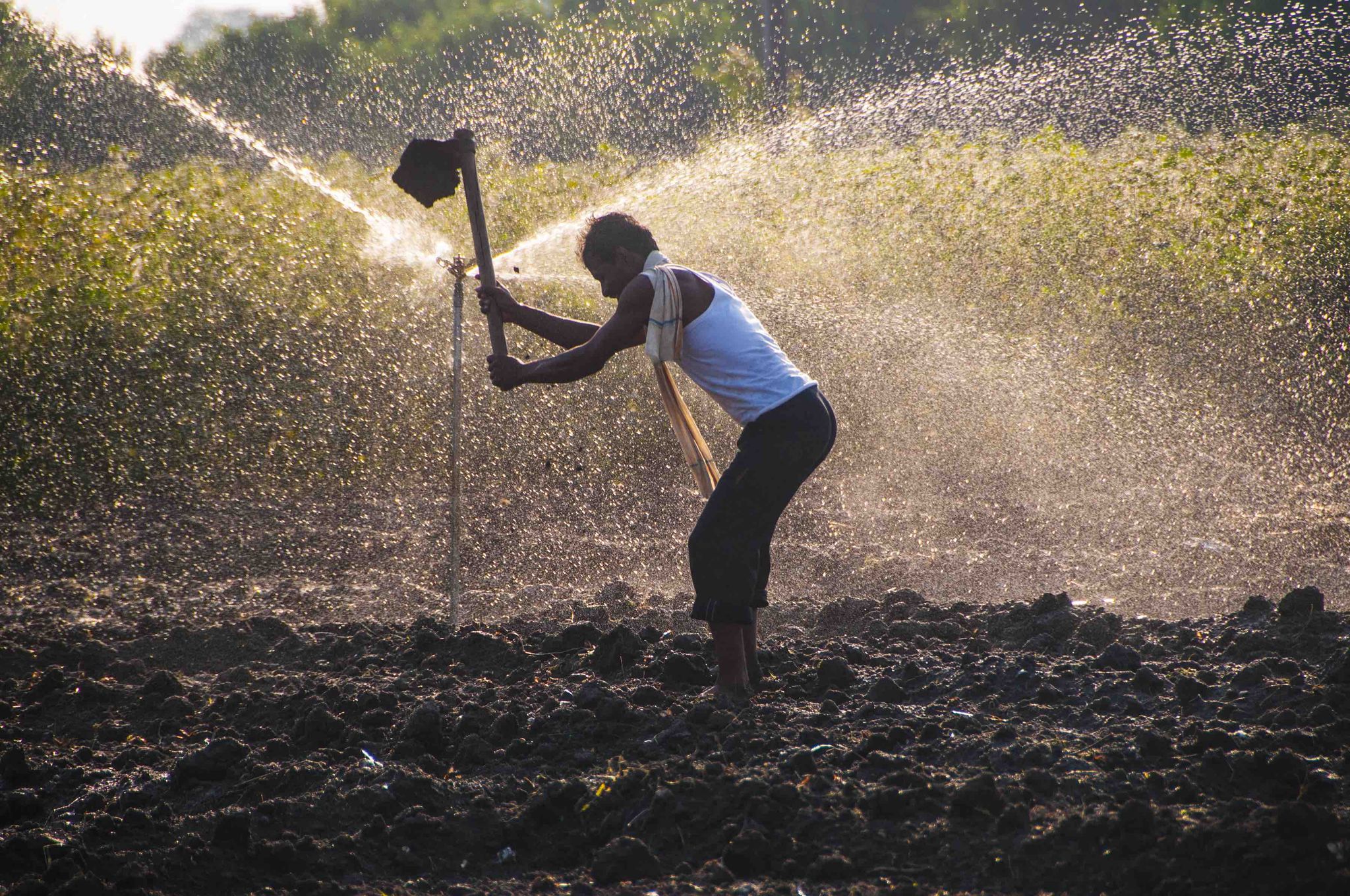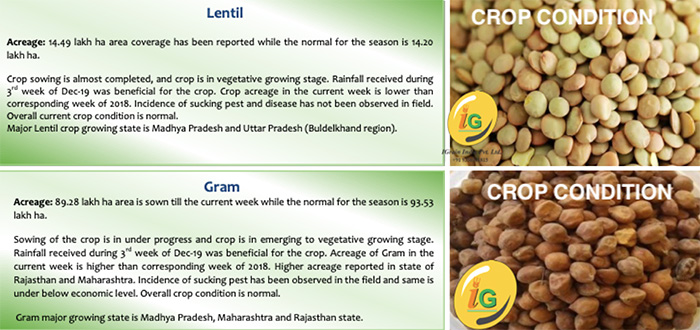
By Rahul Chauhan, Director of IGrain India Pvt. Ltd, Delhi-India (with Dario Bard contributing)
In much of India, rainfall from October to December has been 40 to 70% above normal levels. This has presented growers with good soil moisture conditions and propelled rabi planting progress ahead of last year’s pace by 38.37 lakh hectares. According to official government figures, 600.32 lakh hectares have been seeded to rabi crops as of January 3, up 7% from a year ago.
In the case of pulses, 146.24 lakh hectares were seeded as of that date, up from last year’s pace of 142.22 lakh hectares. Most of the increase is in the rabi season’s major pulse crop, chana (gram), as well as in peas. In the case of chana, the area increased from 93.19 lakh hectares last year to 98.52 lakh hectares this year. The seeded area for peas improved from 9.08 lakh hectares last year to 9.27 lakh hectares this year. The only other pulse crop that is ahead of last year’s sowing pace is urad bean, up from 6.16 lakh hectares last rabi season to 6.42 lakh hectares this rabi season. For all other pulse crops, planting progress is behind last year’s pace:
Although the chana area is up, it should be noted that most of the increase is in Rajasthan (21.18 lakh ha. this year compared to 15.97 lakh ha. last year), where chana lost irrigated ground to wheat and was therefore planted mainly in rainfed fields. Additionally, a good part of the chana crop was seeded by first-time chana growers. Given the yield variation in irrigated versus rainfed fields, plus the inexperience of some growers, production projections are premature at this point.
Further, in Maharashtra, another important chana producing state, the pace of sowing has been slow due to a wet November, the consequence of a late withdrawal of the monsoon, which means chana crops there will have less time to mature before high temperatures set in.
Since Rajasthan and Maharashtra account for 40% of the chana area this year, these factors could be game changers.
The seeding of pulse crops is nearly complete and thus far the weather has been kind. But now conditions in January and February will either make or break this rabi season’s crop. New crop from the south of the country will start entering markets in February.
Kharif pigeon peas from Karnataka, the biggest pigeon pea producing state, are now entering the market. New crop arrivals should peak after January 15, when production from other states, especially Maharashtra, enter the market. Thus far, the moisture content has been above average but should improve with later arrivals. However, recent rains in Karnataka may delay new arrivals and increase the moisture content of pigeon peas from that state.
The government of India approved the import of an additional 2.5 lakh MT of black gram. The product must enter the country by March 31. However, imports are likely to amount to less than 1 lakh MT due to limited supplies from Myanmar.
On December 18, India’s Directorate General of Foreign Trade issued a notice (Notification No. 37/2015-2020) restricting the import of all types of peas to 1.5 lakh MT per fiscal year and also imposing a Minimum Import Price (MIP) of Rs. 200/kg CIF. Additionally, under this decree, pea imports must enter through the port of Kolkata, increasing transportation costs for importers. The only exceptions are for pea imports under existing trade agreements and MOUs.
The effect of these measures has been to bring pea imports to a halt. In a statement, Jitu Bheda, chairman of the India Pulses and Grains Association (IPGA), said, “There is no peas import after the government changed its status as ‘restricted’ from ‘free’ and levied MIP of Rs 200 a kg. We, therefore, have urged the government to withdraw both notifications to make at least green peas (an import-reliant pulses variety) available to Indian consumers.”
The government will be announcing new policies for the issuance of import licenses for the next financial year, which starts on 1 April 2020. Consequently, imports of pigeon peas, black gram and green beans will likely remain on hold till May. Lentil and gram imports will continue as normal.
